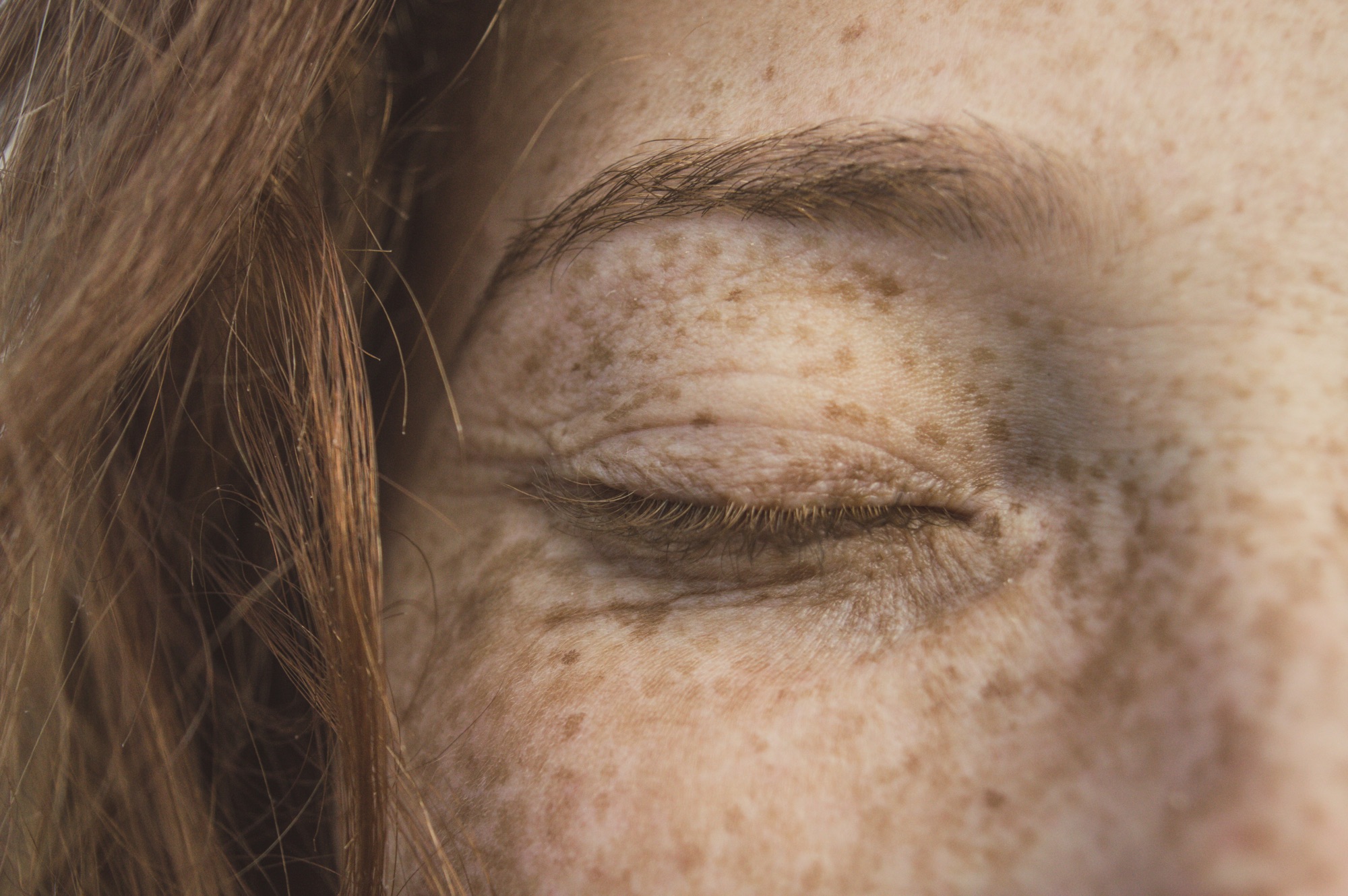Freckles, those distinct, small, flat, and light brown spots on the skin, result from a complex interaction between genetic predisposition and environmental factors. These spots represent areas of increased melanin production, a pigment responsible for skin, hair, and eye color. While often considered a unique and appealing trait, the formation of freckles provides insight into the intricate processes governing skin pigmentation.
Genetic Underpinnings of Freckle Formation
The likelihood of developing freckles is deeply rooted in an individual’s genetic makeup. Key among the genetic players is the MC1R gene, which influences skin pigmentation. Variants in this gene can alter the balance between eumelanin and pheomelanin, leading to the development of freckles. This genetic predisposition determines not only the potential to develop freckles but also their distribution and intensity on the skin.
The Role of the MC1R Gene
The MC1R gene is part of a family of genes that dictate how our bodies produce melanin. In individuals with certain variants of this gene, the production of pheomelanin, which gives a red or yellow hue, is favored over eumelanin, leading to freckling. This explains why people with lighter skin tones, particularly those with red or blonde hair, are more likely to have freckles. It’s fascinating to note that in some populations, nearly 80% of individuals with red hair also have freckled skin.
Polygenic Nature of Freckling
Beyond MC1R, additional genes contribute to freckle formation, making it a polygenic trait. For instance, studies have pointed to other genes such as ASIP and TYR, which also play roles in pigmentation. The complex interaction of these genes creates a spectrum of freckling patterns, intensities, and distributions. This genetic mosaic can vary significantly even among siblings, highlighting the intricate nature of genetic inheritance.
Exploring Additional Genetic Influences
Recent research has suggested that variations in genes like BNC2 and IRF4 also contribute to freckle formation. These genes, while not as well-known as MC1R, play subtle roles in pigmentation and influence how freckles manifest across different individuals. Understanding these additional genetic factors can help create a more comprehensive picture of why freckles occur.
Environmental Influences on Freckle Development
Environmental factors, particularly UV radiation, play a critical role in the development of freckles. UV exposure triggers melanocytes to produce melanin as a protective measure against DNA damage, which can lead to localized overproduction in individuals prone to freckles.
UV Radiation and Melanin Production
When UV rays penetrate the skin, they stimulate the melanocytes in the epidermis to ramp up melanin production, resulting in the darkening of existing freckles and the formation of new ones. This explains why freckles become more pronounced during the sunny months and may fade when sun exposure diminishes.
Artificial UV Sources
Not only natural sunlight but also artificial sources of UV light, such as tanning beds, can exacerbate freckle formation. In fact, the concentrated exposure from tanning beds can lead to more pronounced and uneven freckling and increase the risk of skin damage and cancer.
The Impact of Lifestyle Choices
Lifestyle choices can significantly impact freckle development. For instance, individuals who frequently engage in outdoor activities without adequate sun protection may notice an increase in freckle intensity and number. Additionally, those who use tanning beds may experience more significant freckle development, alongside other potential skin health risks.
The Interaction Between Genetics and Environment
The interplay between genetics and environmental factors such as UV radiation dictates the formation and appearance of freckles. Genetic predisposition sets the stage, but environmental exposure to UV light is often the trigger that leads to freckle development.
Case Study: Freckling Patterns in Different Ethnicities
Consider the example of Irish populations, where freckling is common due to the prevalence of specific MC1R variants. In contrast, freckling is less common in populations from equatorial regions, where high eumelanin production offers natural protection against UV radiation. This demonstrates how genetic predisposition interacts with environmental factors to produce visible outcomes.
Freckles Across Cultures
The cultural significance of freckles varies across the globe. In some cultures, freckles are seen as a mark of beauty and uniqueness, while in others, they may be less appreciated. Understanding these cultural perspectives provides a richer context for how freckles are perceived and celebrated worldwide.
Managing and Understanding Freckles
For individuals aiming to minimize their freckles, sun protection is essential. Strategies like using broad-spectrum sunscreen, wearing protective clothing, and avoiding peak sunlight hours can effectively reduce UV exposure, limiting melanin production and subsequent freckle formation.
Practical Sun Protection Tips
- Sunscreen: Choose a broad-spectrum sunscreen with an SPF of at least 30. Apply it generously and reapply every two hours, or more often if swimming or sweating.
- Protective Clothing: Wear hats with wide brims and clothing with UPF (Ultraviolet Protection Factor) ratings to shield the skin.
- Shade and Timing: Seek shade during peak sun hours, typically between 10 a.m. and 4 p.m., when UV rays are strongest.
Additional Sun Protection Strategies
- Sunglasses: Protect not just your skin but also your eyes by wearing UV-protective sunglasses.
- Lip Balm with SPF: Don’t forget about your lips; use a lip balm with SPF to protect this sensitive area from sun damage.
Embracing Freckles
On the other hand, many people embrace their freckles, seeing them as an integral part of their identity and a feature to be celebrated for its uniqueness. Social media and fashion trends have increasingly popularized freckles, with some opting for cosmetic tattoos to mimic the appearance of freckles.
Psychological and Social Aspects of Freckles
The perception of freckles has evolved over time. Historically, freckles were sometimes viewed negatively, associated with a lack of “perfect” skin. However, societal attitudes are shifting towards greater acceptance and celebration of natural beauty.
The Rise of Freckle Acceptance
In recent years, there has been a notable shift in how freckles are perceived. Celebrities and influencers proudly showcasing their freckles have played a significant role in changing public perception. This has led to a cultural shift where freckles are now often seen as a symbol of individuality and natural beauty.
Freckles as a Fashion Statement
Thanks to changing trends, freckles have become a coveted feature in the beauty industry. Temporary freckle tattoos and makeup techniques that mimic freckles are increasingly popular, allowing individuals without natural freckles to enjoy this charming trait.
Advances in Freckle Research
The Future of Genetic Research
As genetic research advances, scientists are uncovering more about the specific mechanisms by which the MC1R gene and its interactions with other genes influence freckling. Future studies may reveal additional genes involved in pigmentation, offering new insights into the complexity of skin traits.
Examining the Role of Epigenetics
Emerging research into epigenetics—the study of how behavior and environment can cause changes that affect the way genes work—suggests that environmental factors might influence gene expression related to freckles. This could lead to breakthroughs in understanding how freckles develop and change over time.
Potential Treatments
For those who wish to reduce the appearance of freckles, advances in dermatology offer solutions. Treatments such as laser therapy and chemical peels can effectively target and lighten freckles. However, these procedures should be discussed with a dermatologist to understand their benefits and risks fully.
Understanding Treatment Options
- Laser Therapy: Uses focused light to target and break down melanin, lightening freckles.
- Chemical Peels: Involves applying a chemical solution to exfoliate and remove the top layers of skin, reducing freckle visibility.
- Cryotherapy: Utilizes extreme cold to freeze and remove pigmented spots.
Common Mistakes and How to Avoid Them
Overusing Skin Lightening Products
Some individuals turn to skin-lightening products in an attempt to diminish freckles. However, these can be harmful if used improperly. Many over-the-counter products contain ingredients that can cause irritation or lead to uneven skin tone if not used correctly.
Safe Use of Skin Products
- Consult a Dermatologist: Before starting any skin-lightening regimen, seek professional advice to ensure safety and efficacy.
- Patch Test: Always perform a patch test to check for adverse reactions before applying any new product extensively.
Ignoring Sun Protection
A common mistake is neglecting sun protection during cloudy days or in winter months. UV rays can penetrate clouds and reflect off surfaces like snow, so consistent protection is crucial year-round.
Consistent Sun Protection Habits
- All-Season Care: Use sunscreen daily, regardless of the weather.
- Layering: Incorporate protective clothing and accessories even in cooler months.
Personal Reflections and Broader Implications
Freckles serve as a fascinating example of how genetic and environmental factors converge to create distinct traits. They highlight the complex biological responses our bodies have to the external environment, offering a window into the multifaceted nature of human skin pigmentation and the underlying processes that drive it.
Embracing Individuality
From a personal perspective, embracing freckles can be empowering, recognizing them as a unique aspect of one’s genetic heritage and environmental interactions. Whether choosing to celebrate or minimize them, understanding freckles enriches our appreciation of the diverse tapestry of human skin.
Freckles and Identity
For many, freckles are more than just a skin characteristic—they are a part of their identity, a reminder of heritage, and a reflection of personal history. In embracing freckles, individuals are also embracing their unique stories and the beautiful complexities that come with them.
Conclusion
Freckles, in their simplicity and complexity, are a testament to the intricate interplay of genetics and the environment. They remind us of the beauty in diversity and the stories written on our skin, inviting us to celebrate and understand the diverse expressions of humanity.




